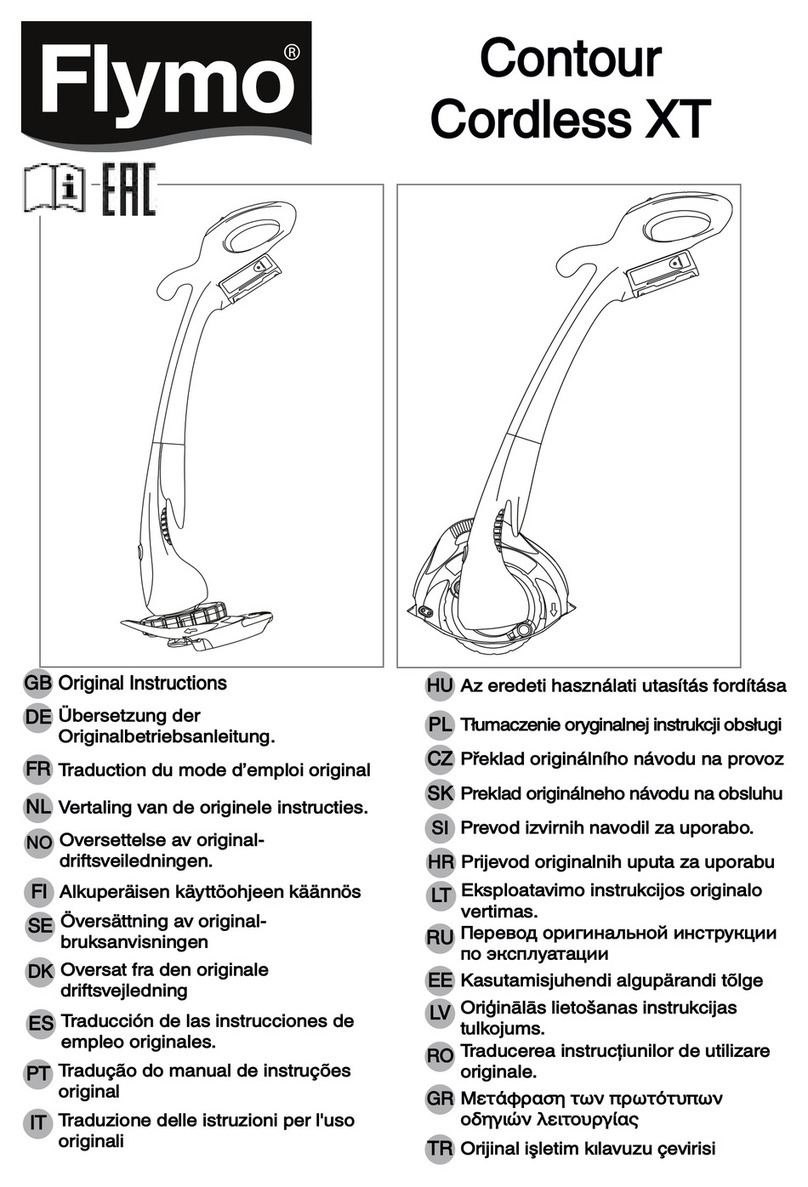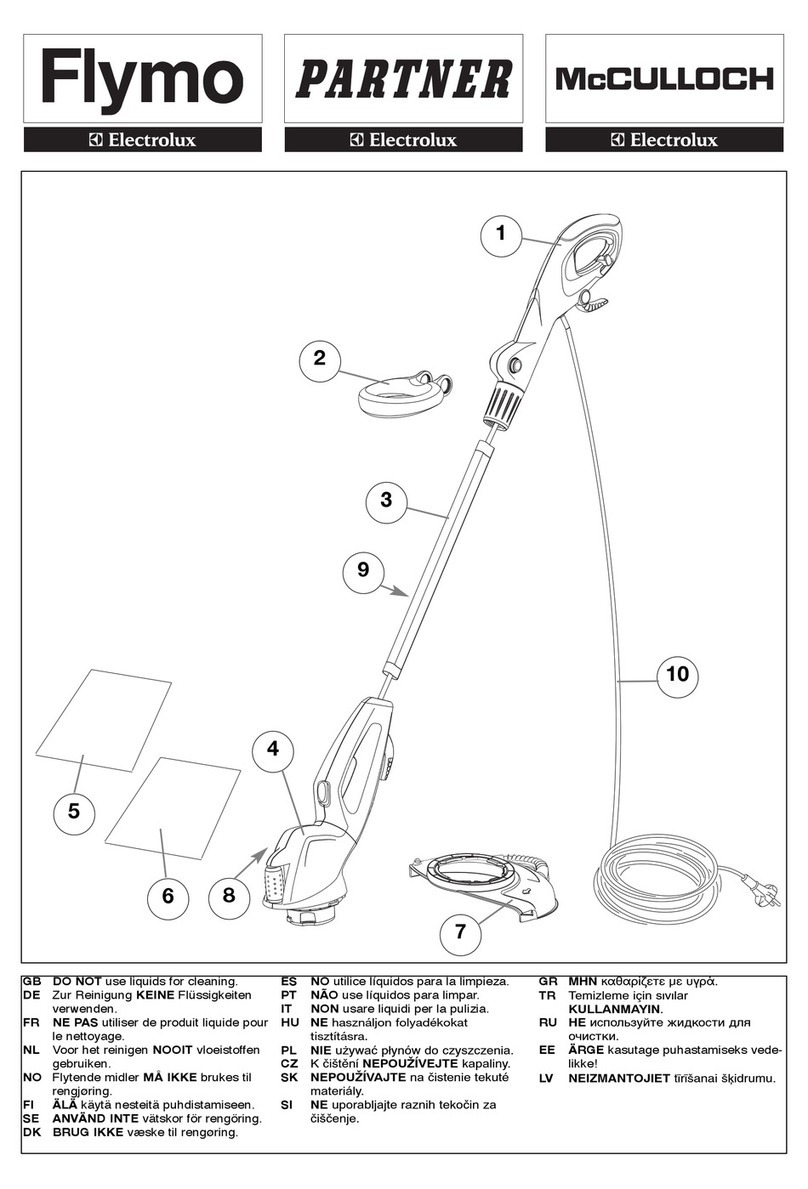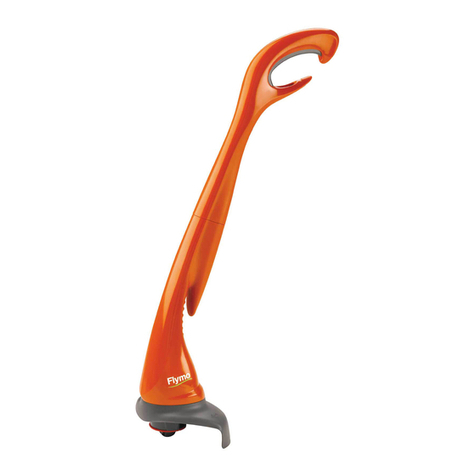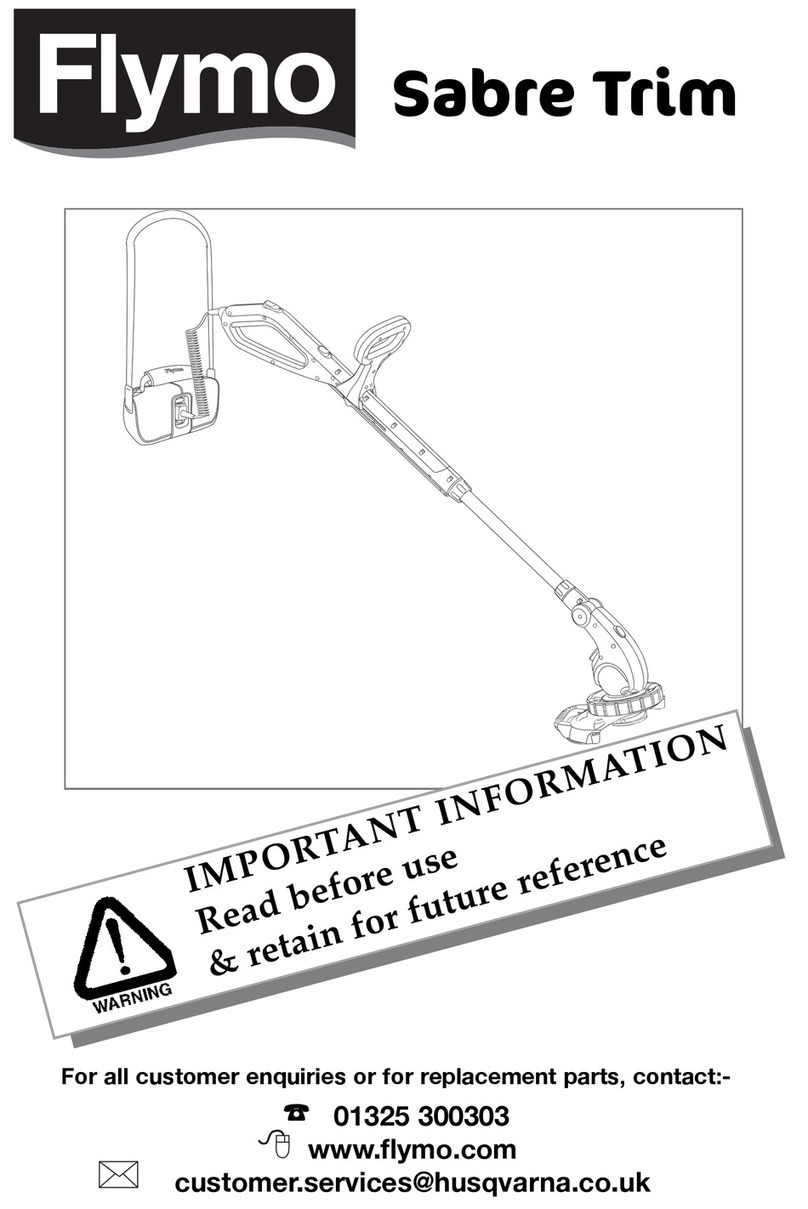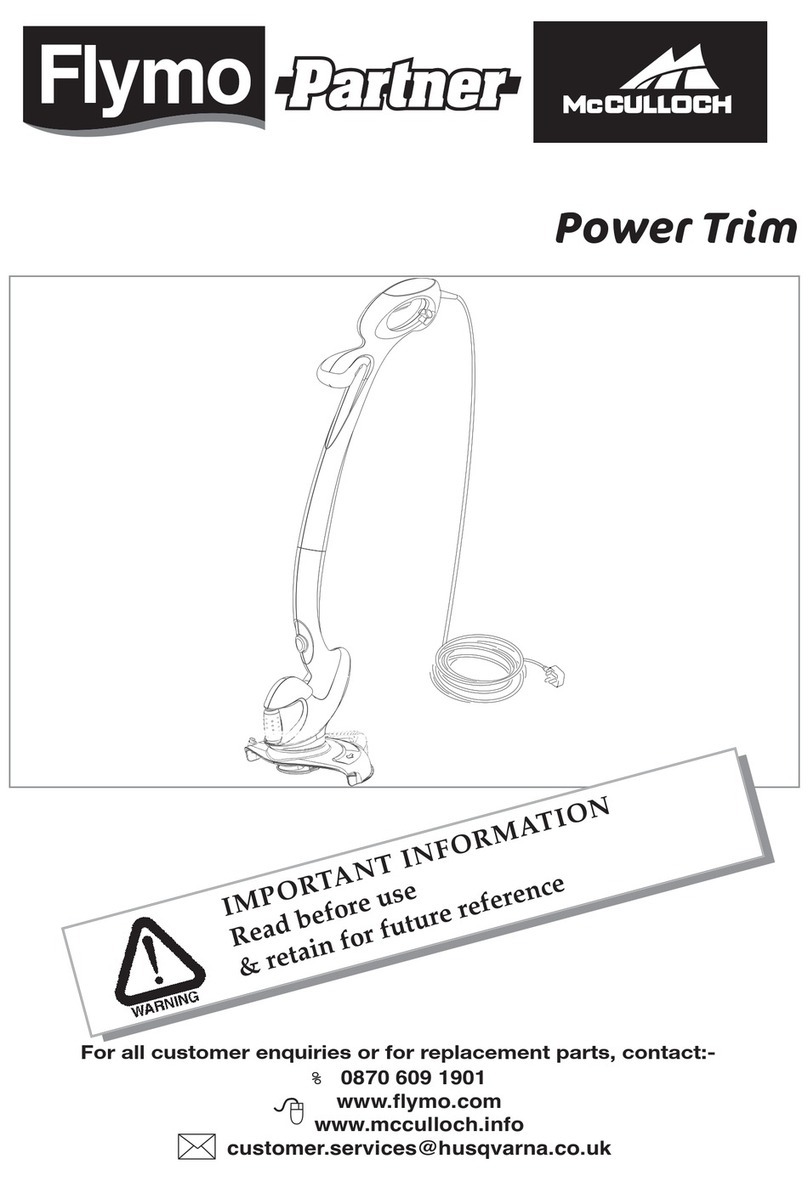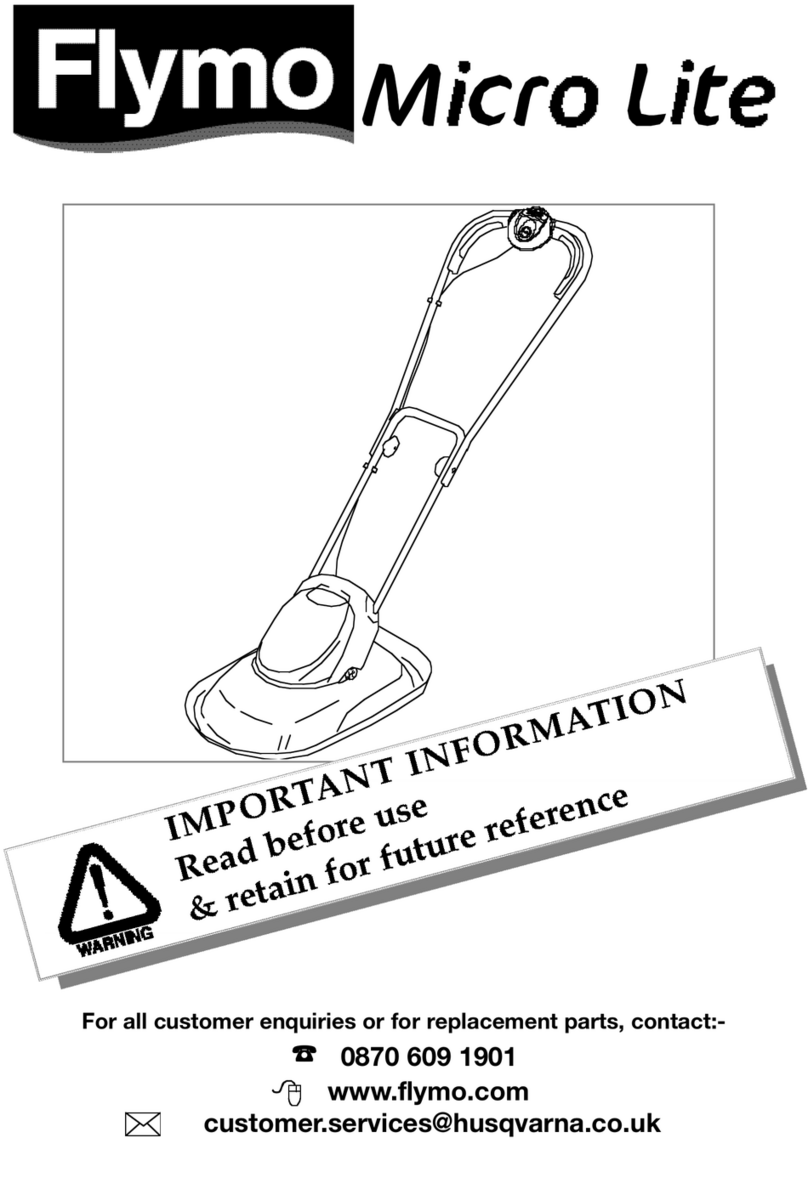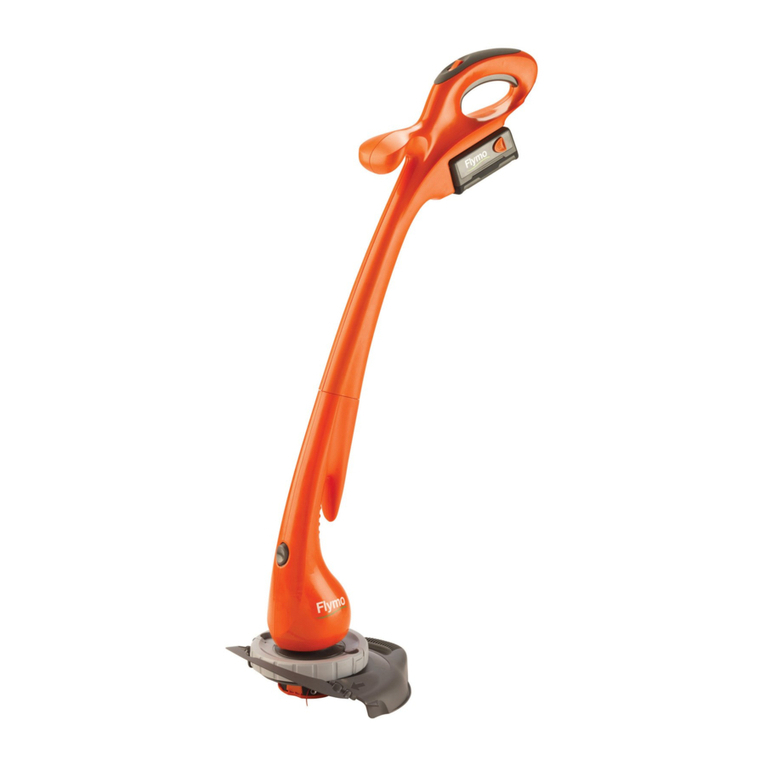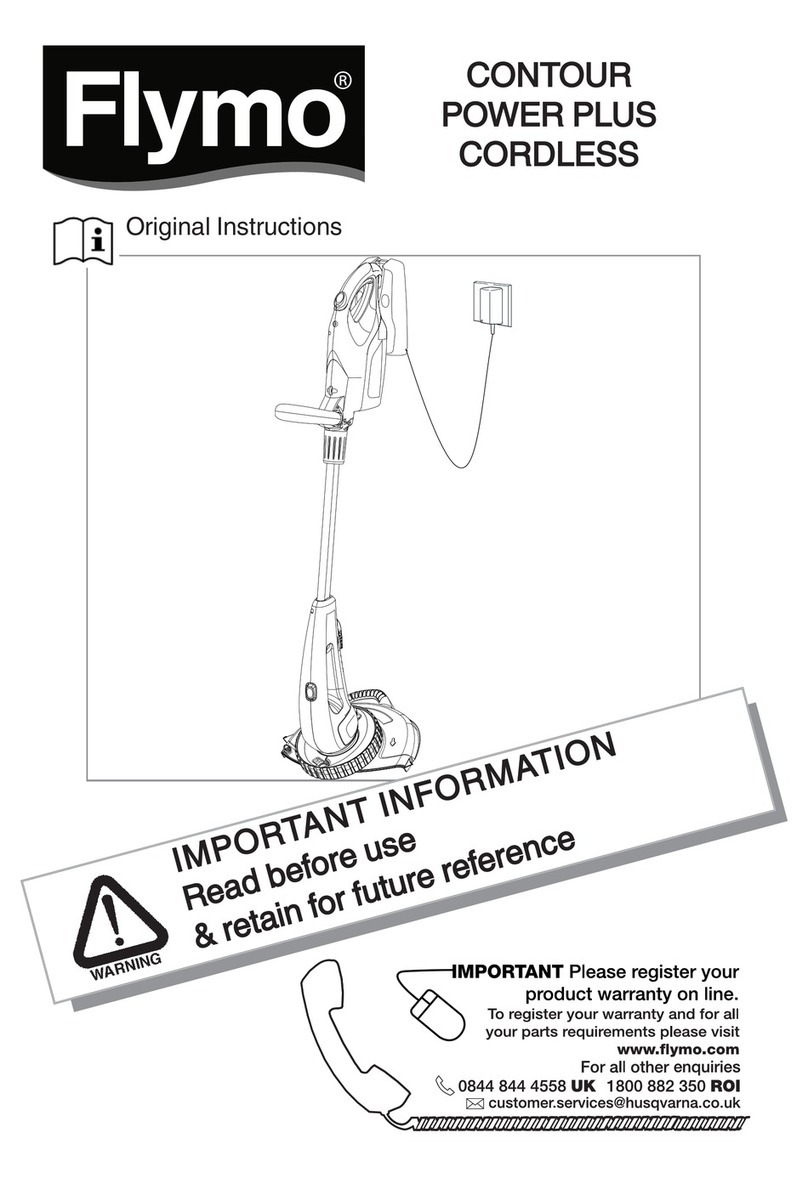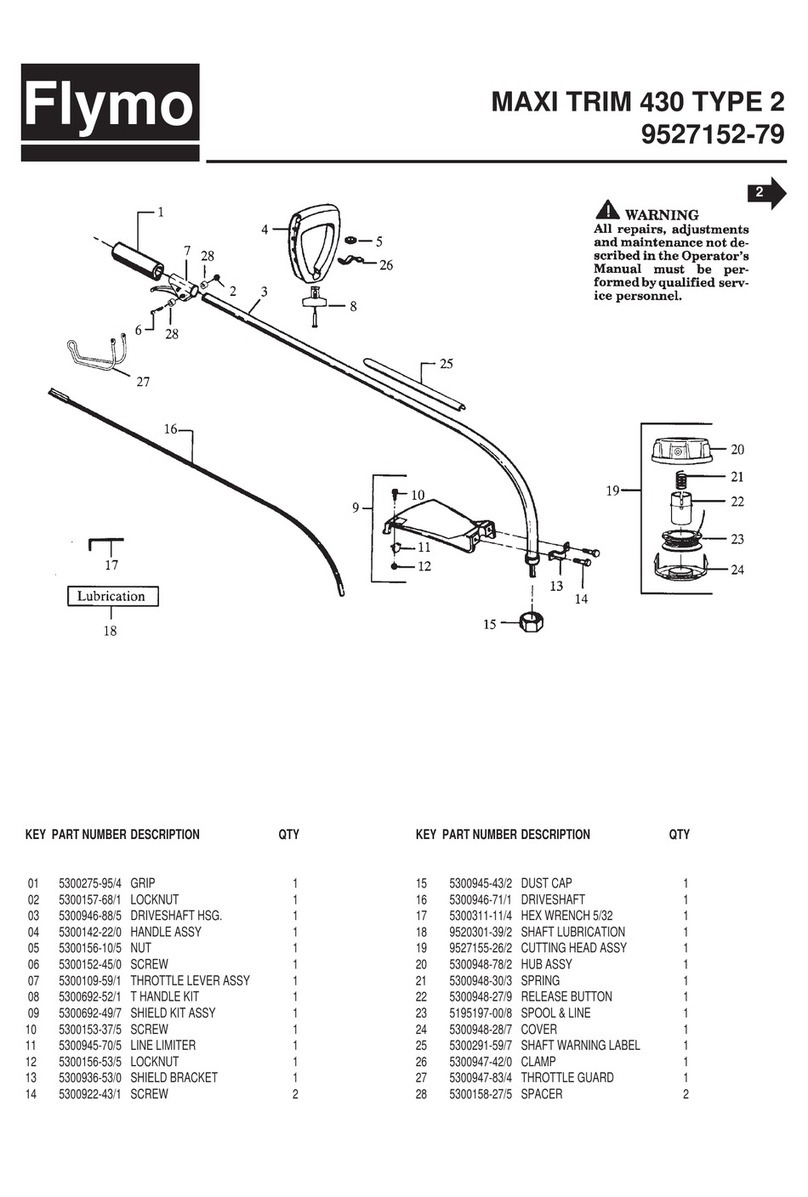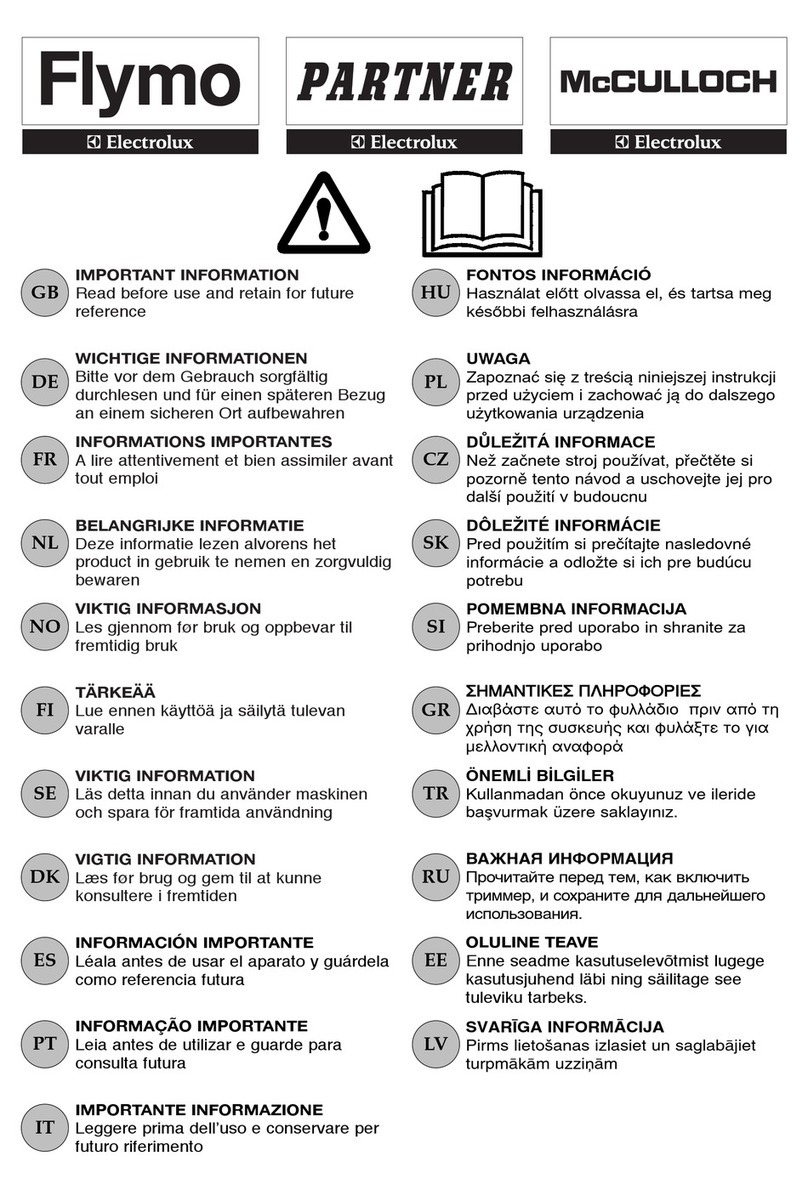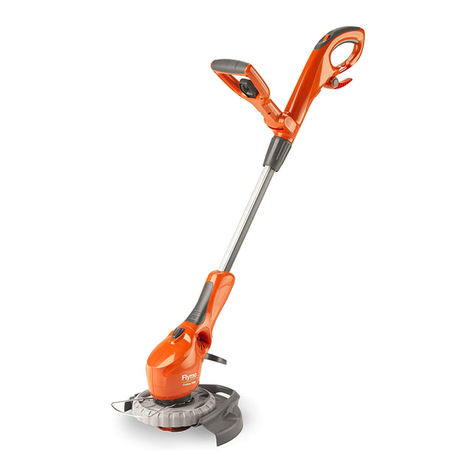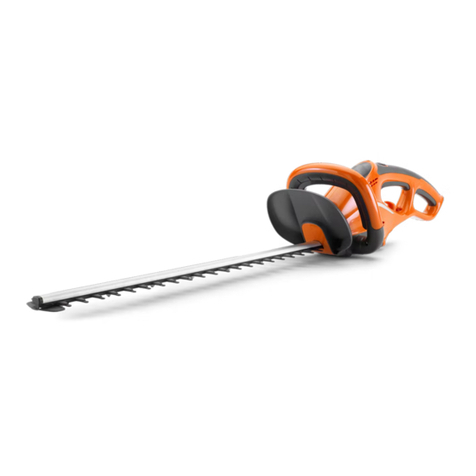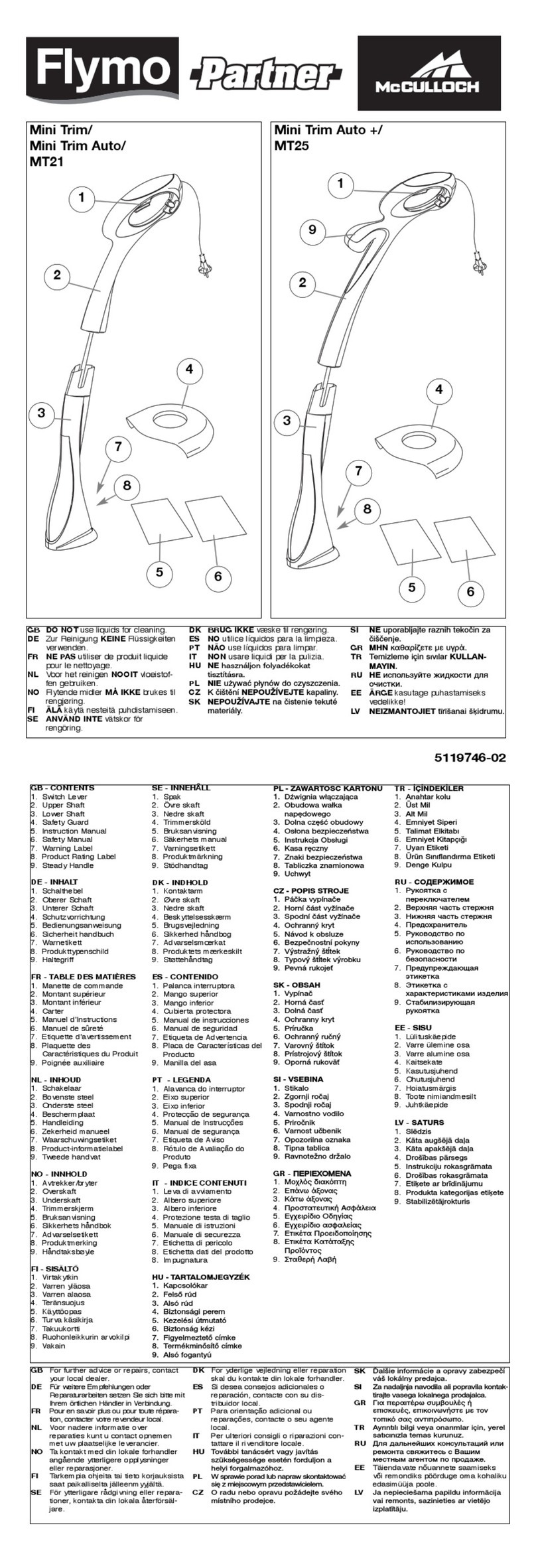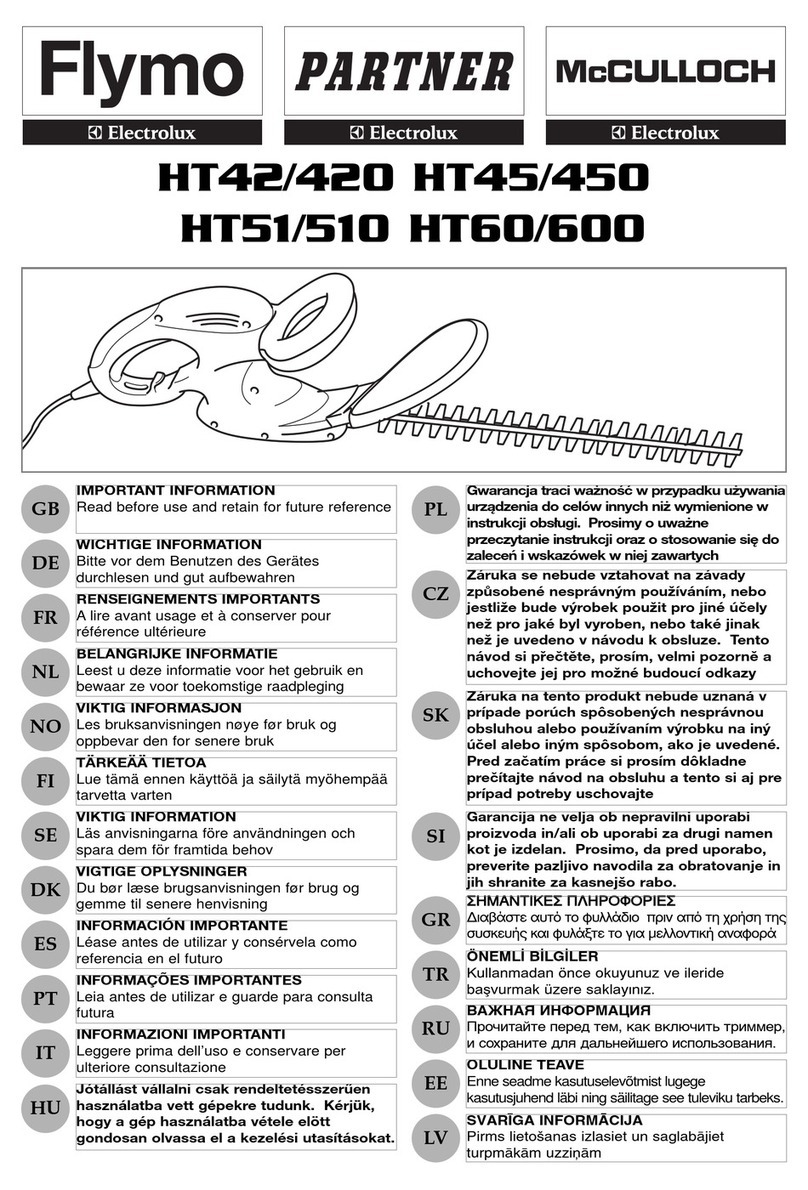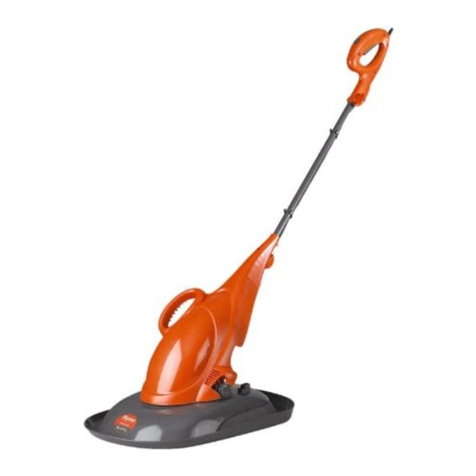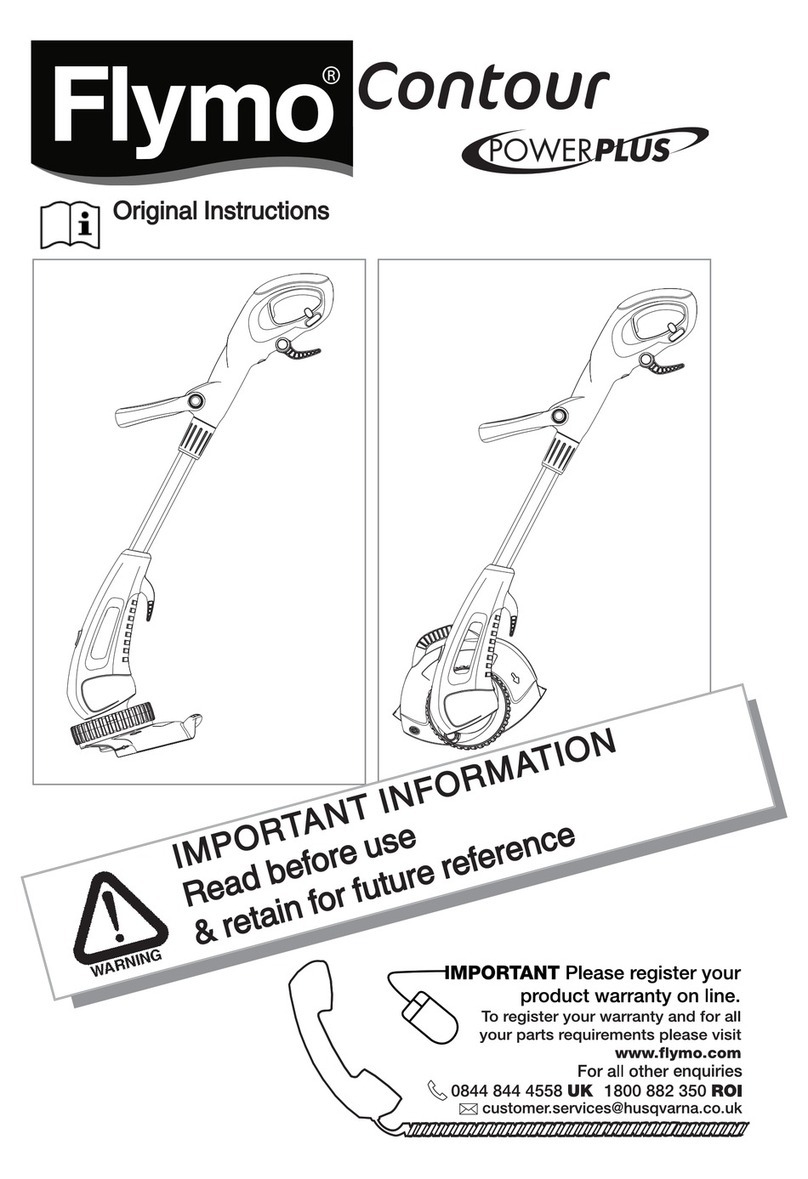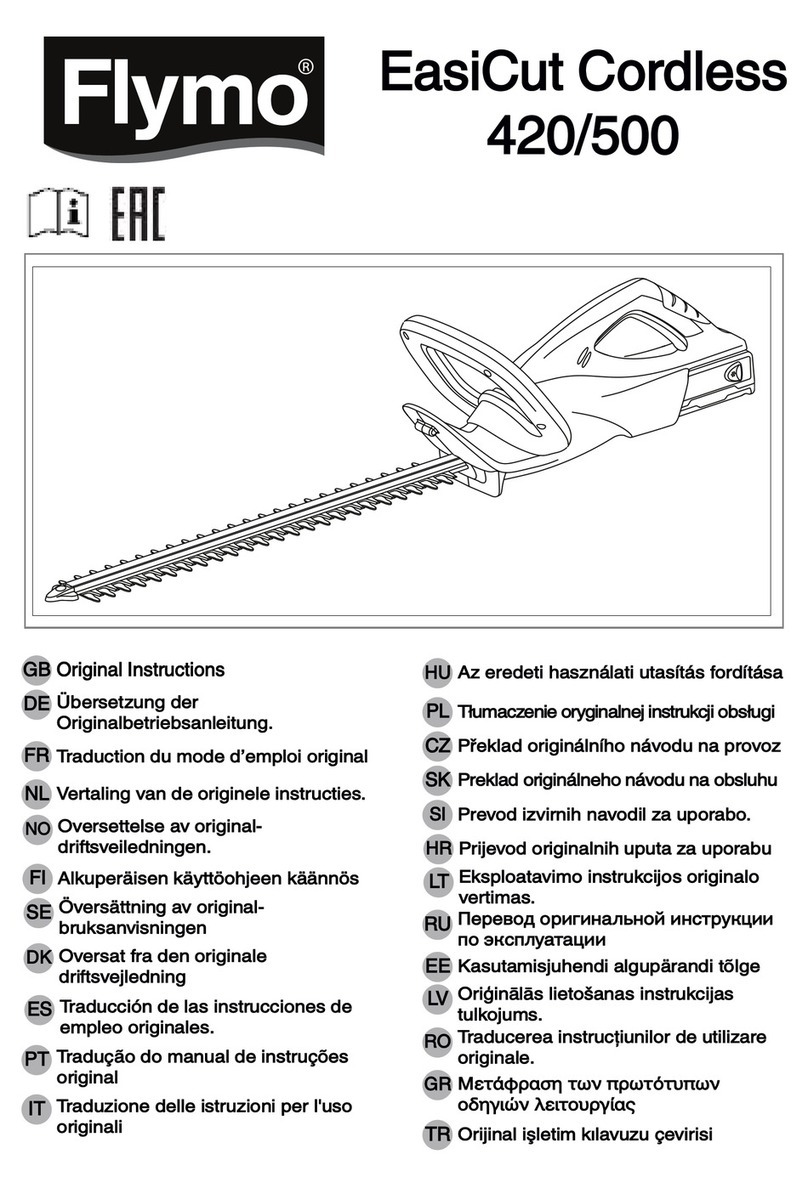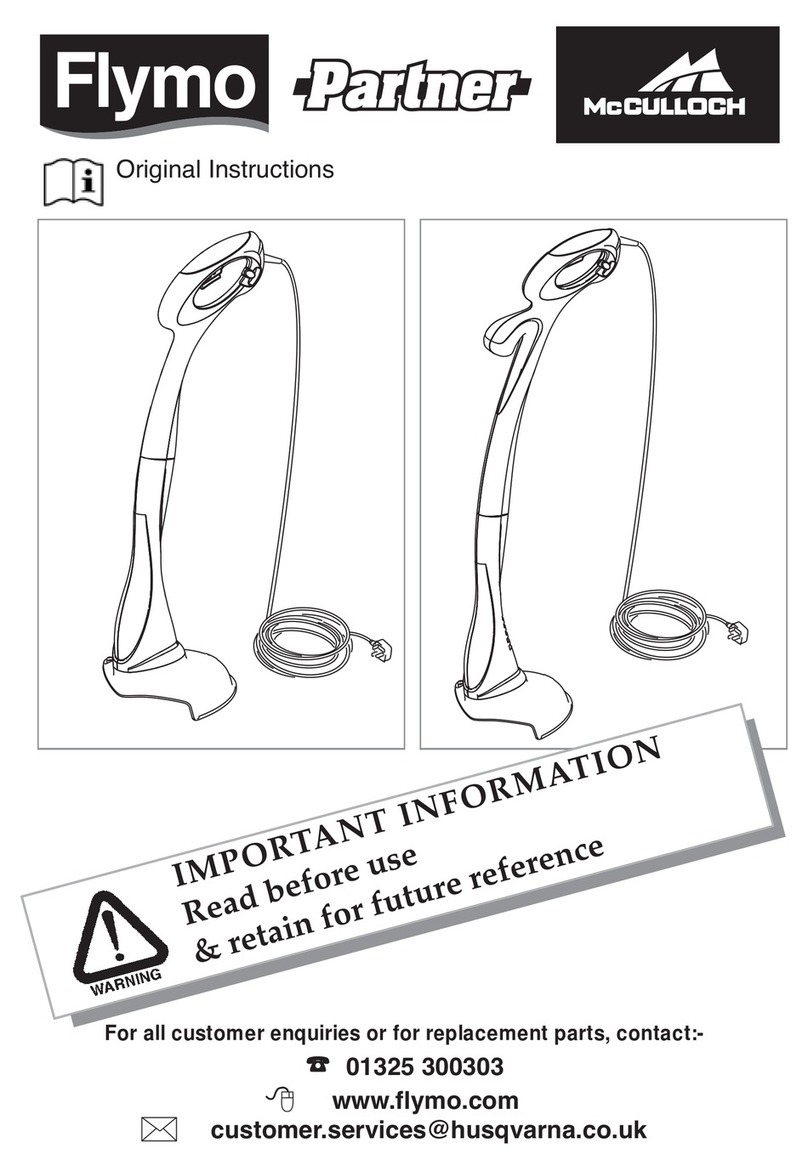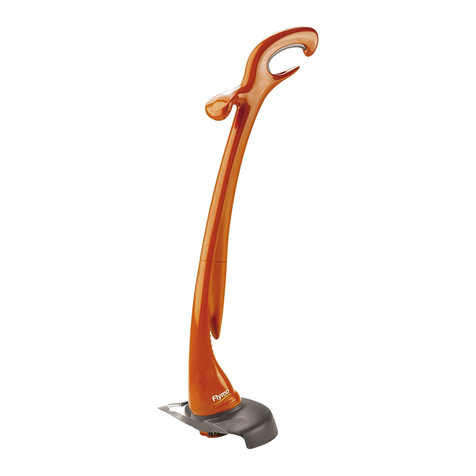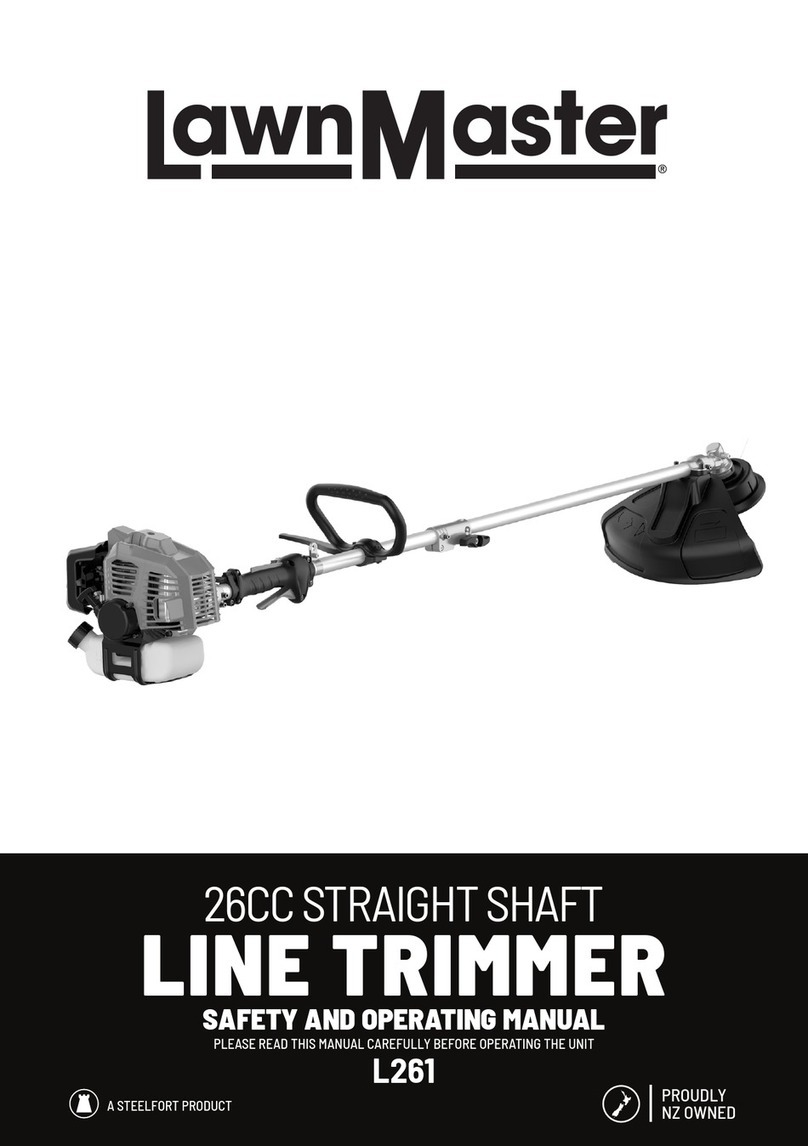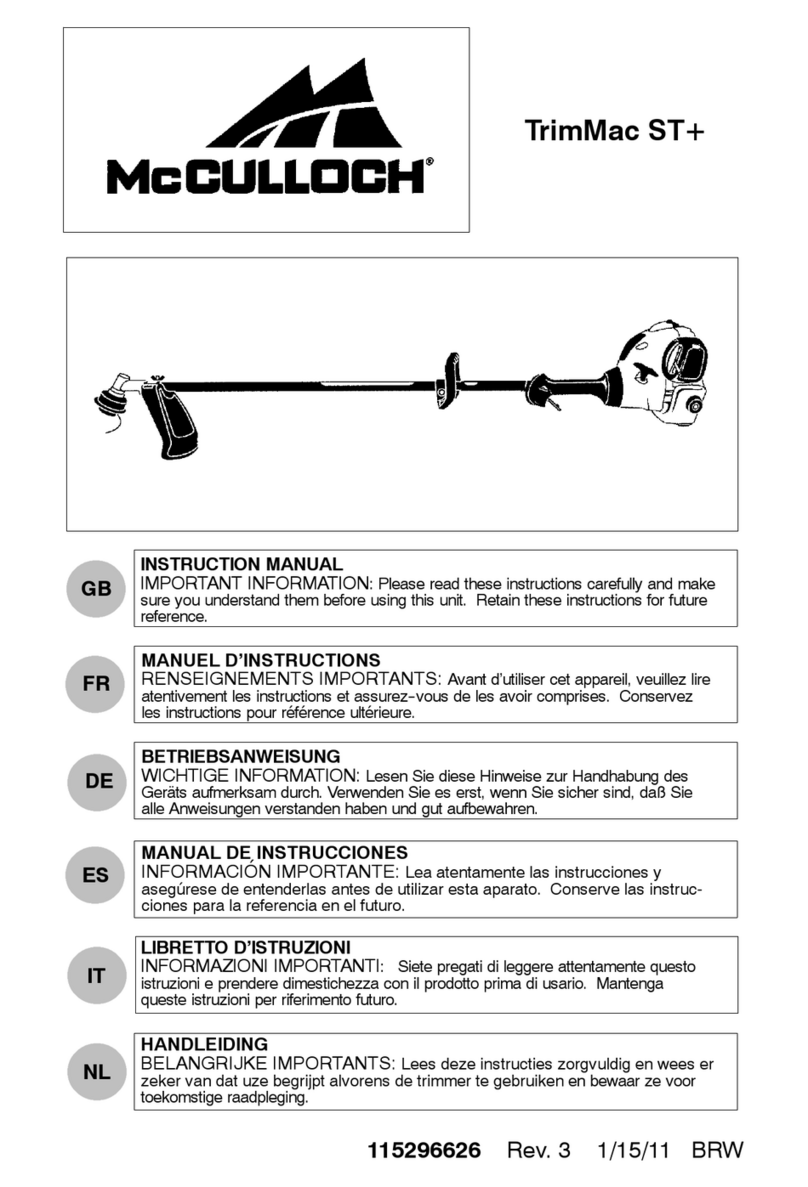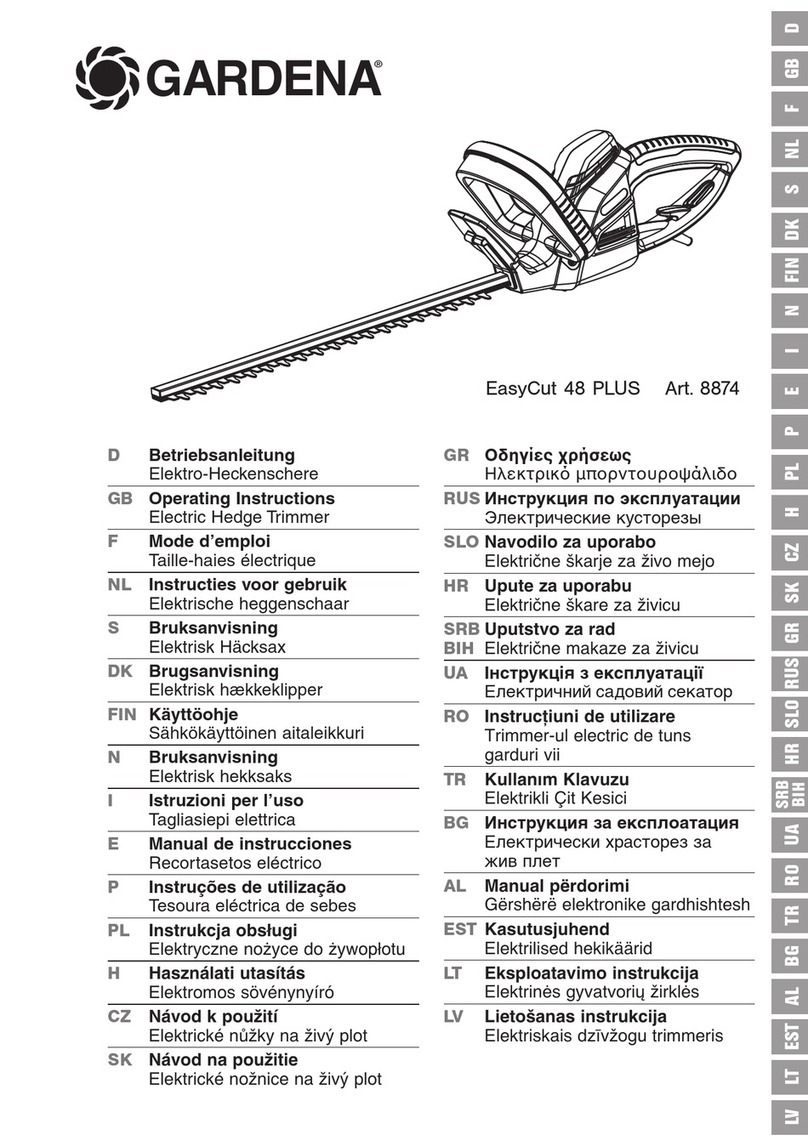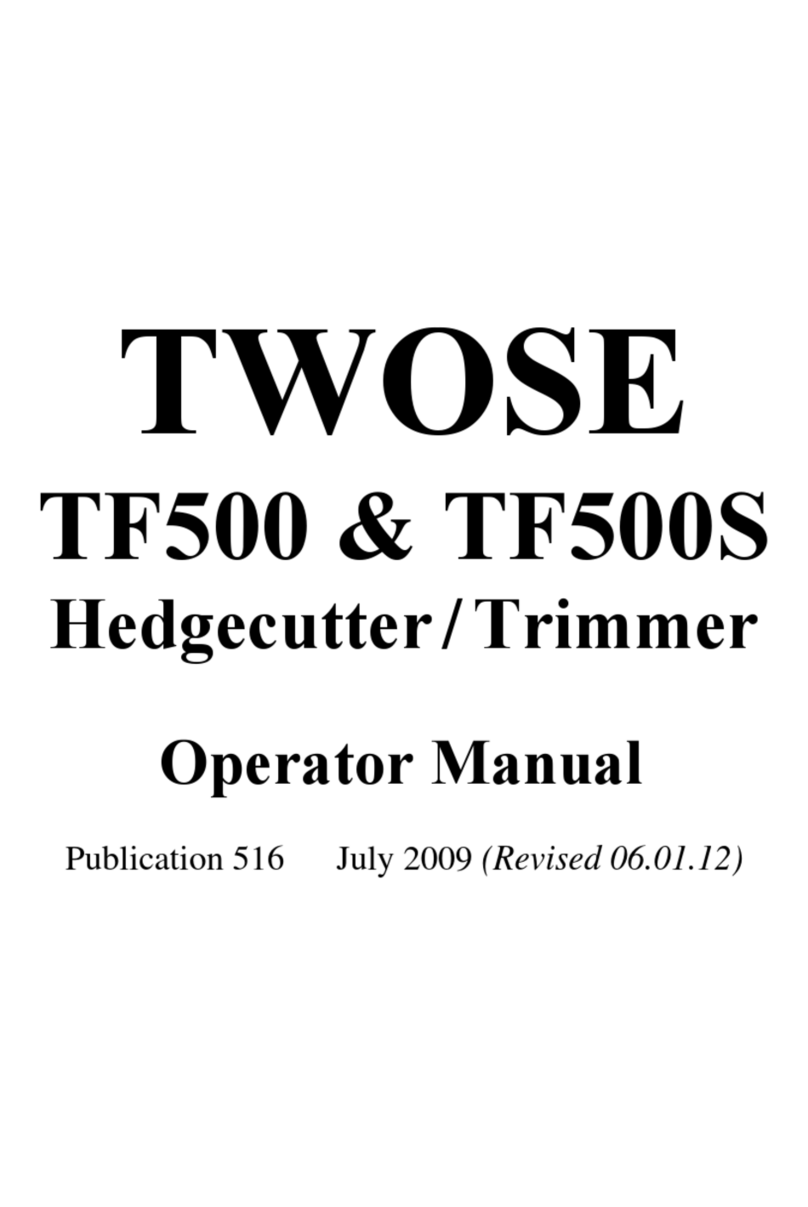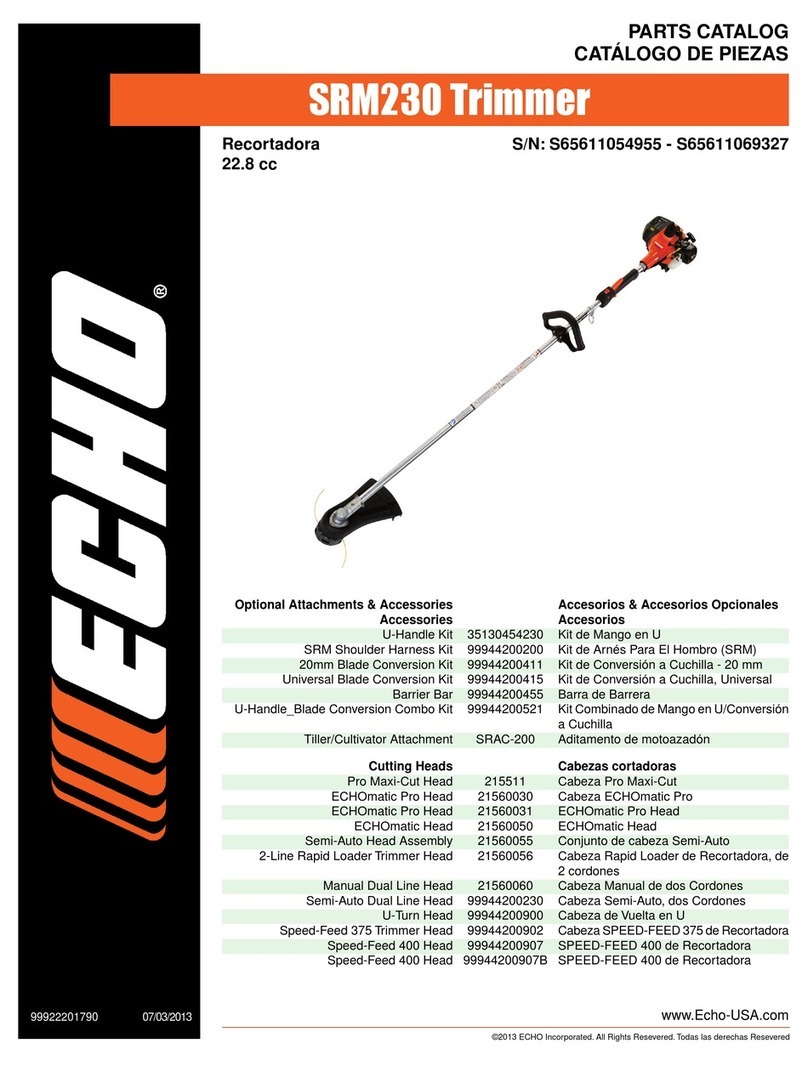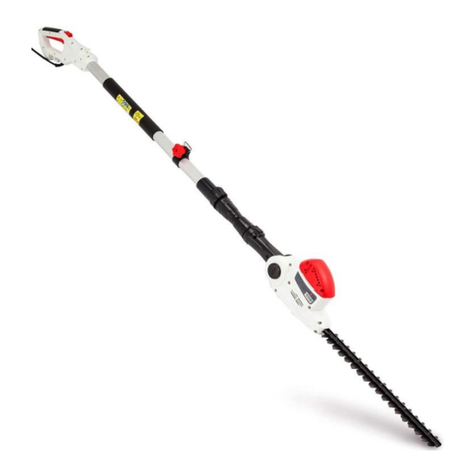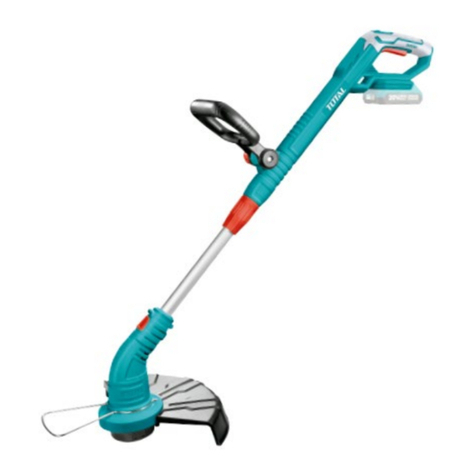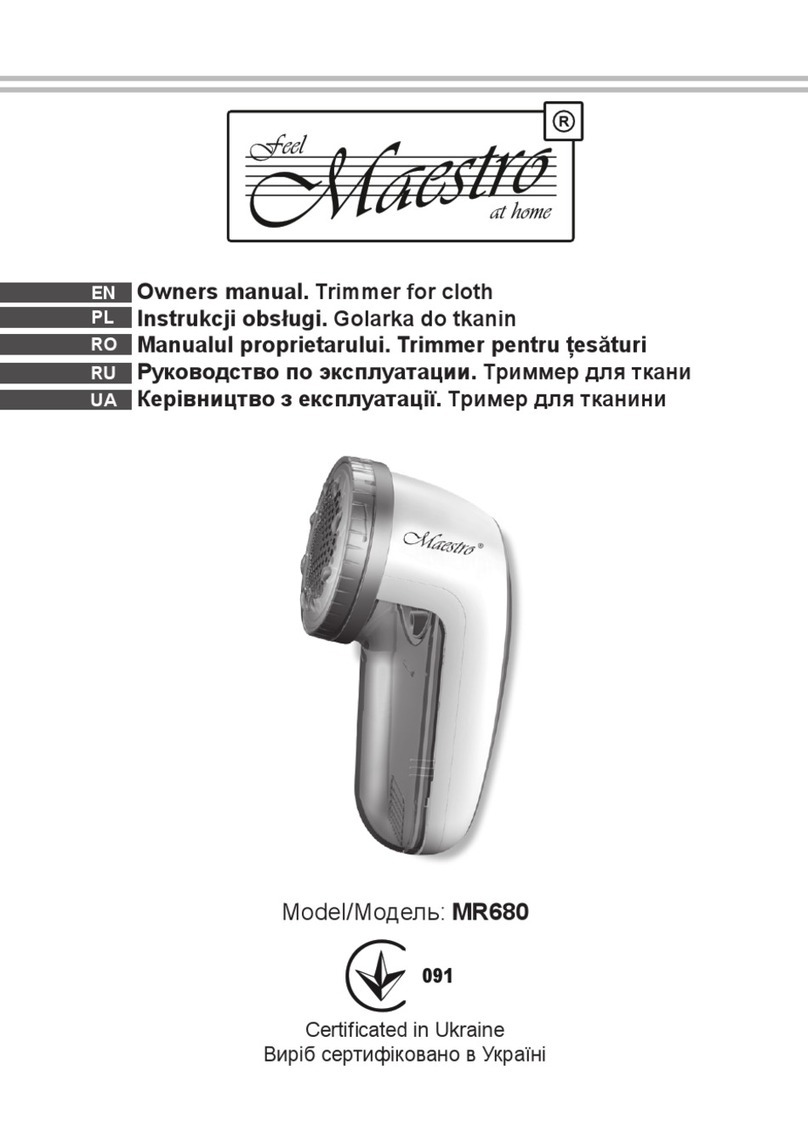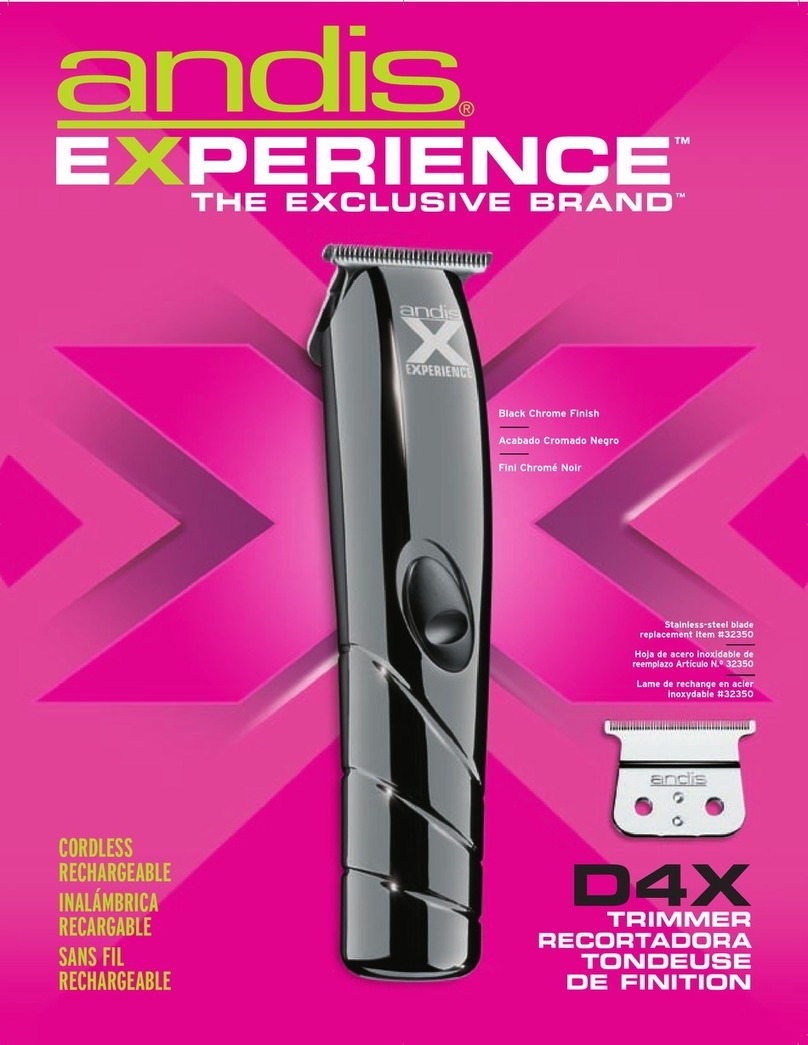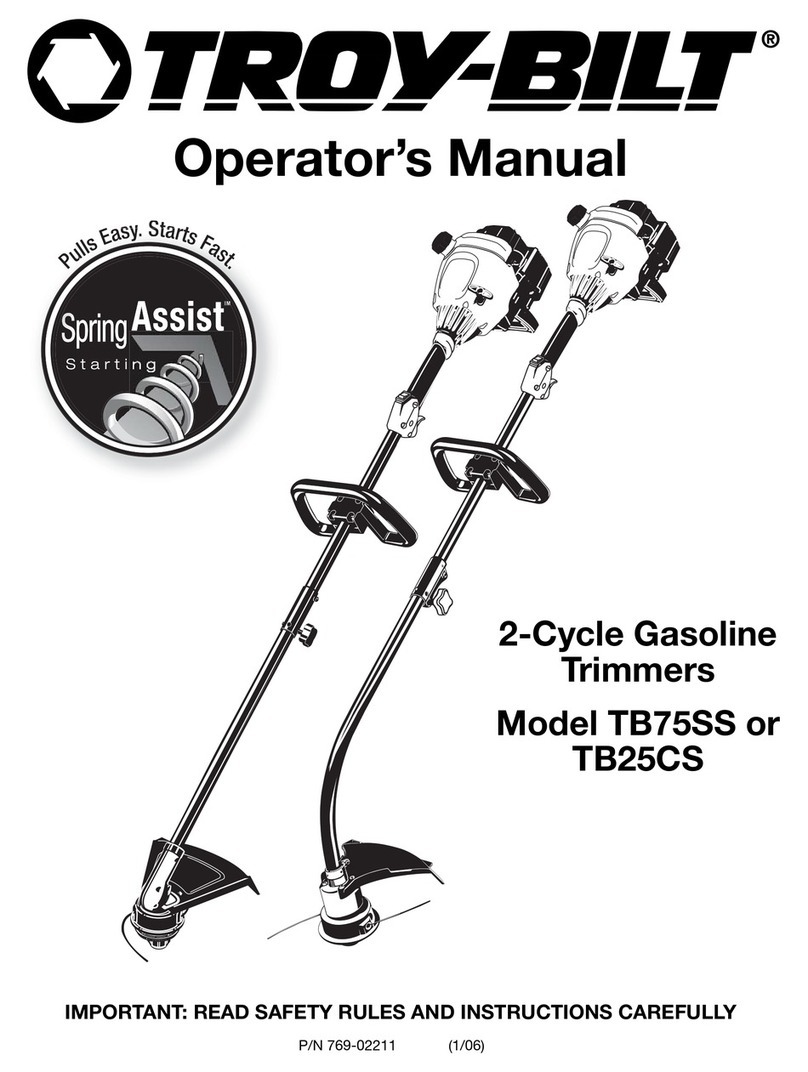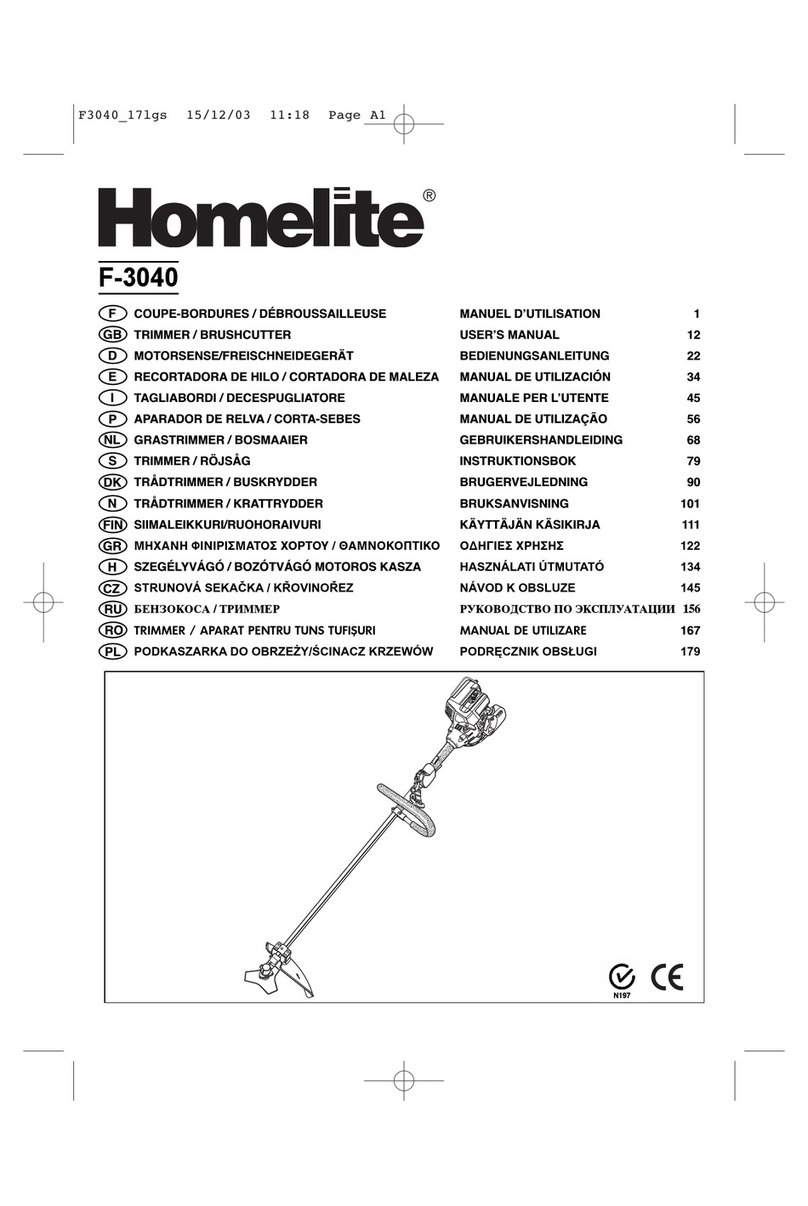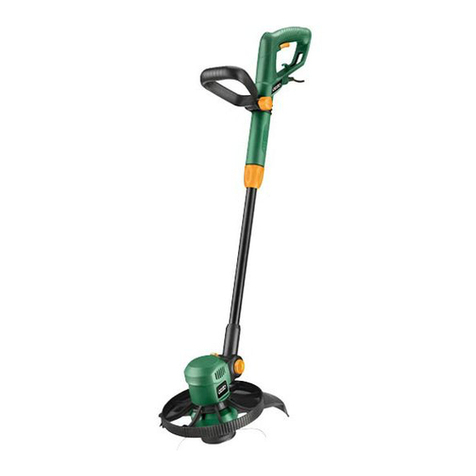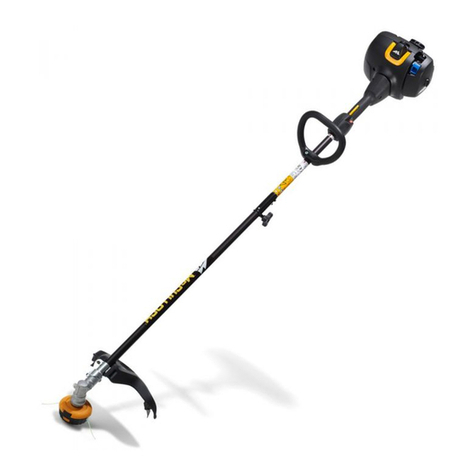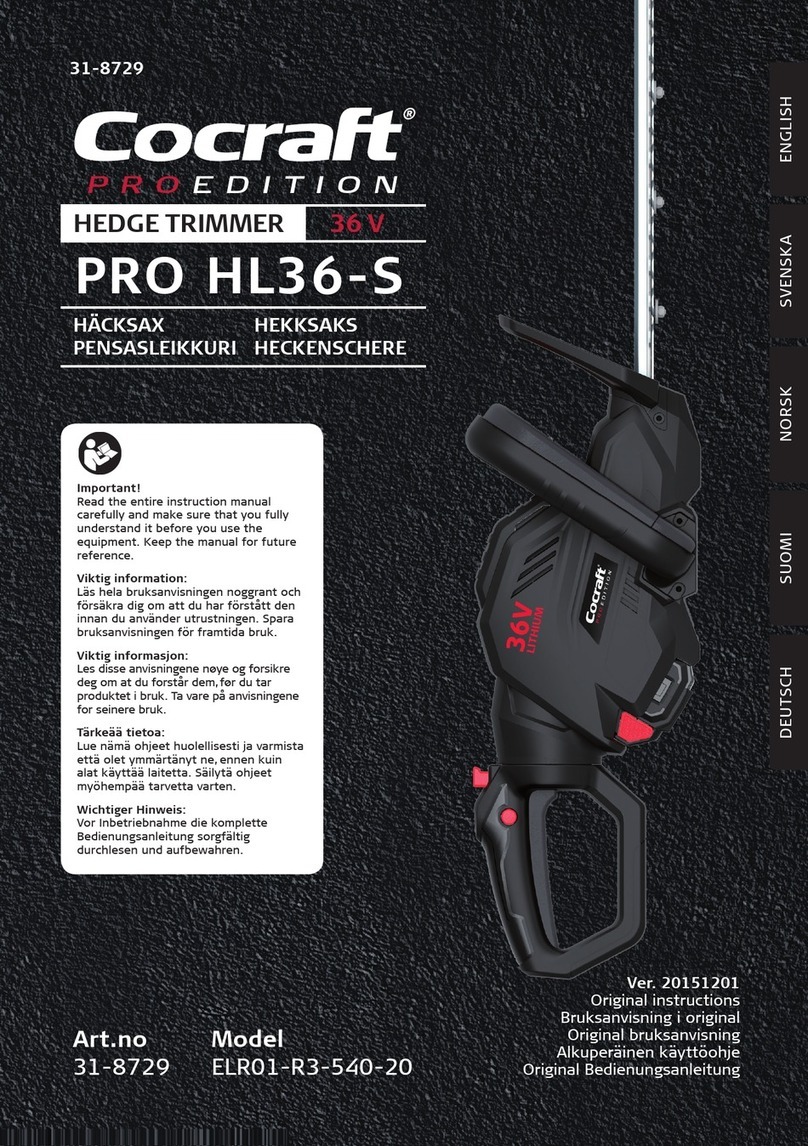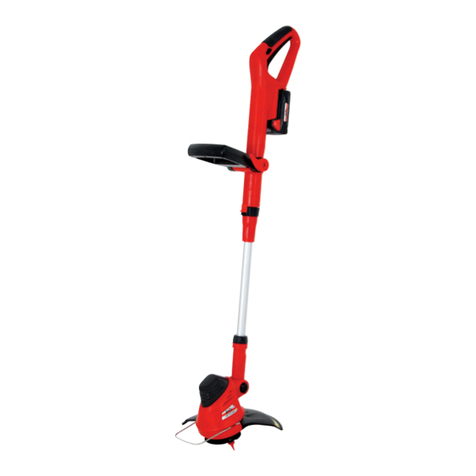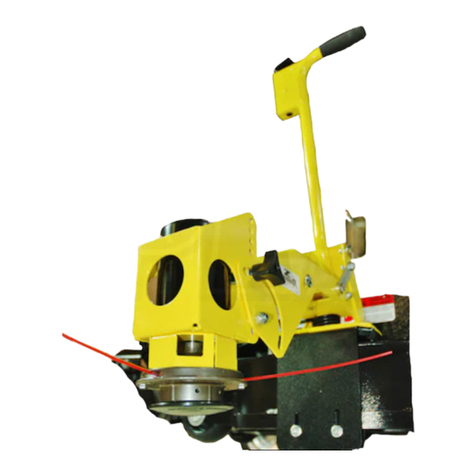
e) When operating a power tool outdoors, use an
extension cord suitable for outdoor use.
Use of a cord suitable for outdoor use reduces the risk
of electric shock.
f) If operating a power tool in a damp location is
unavoidable, use a residual current device (RCD)
protected supply. Use of an RCD reduces the risk of
electric shock.
3) Personal safety
a) Stay alert, watch what you are doing and use
common sense when operating a power tool. Do
not use a power tool while you are tired or under
the influence of drugs, alcohol or medication.
A moment of inattention while operating power tools
may result in serious personal injury.
b) Use personal protective equipment. Always wear
eye protection. Protective equipment such as dust
mask, non-skid safety shoes, hard hat, or hearing pro-
tection used for appropriate conditions will reduce per-
sonal injuries.
c) Prevent unintentional starting. Ensure the switch
is in the off-position before connecting to
power source and /or battery pack, picking up
or carrying the tool. Carrying power tools with your
finger on the switch or energising power tools that have
the switch on invites accidents.
d) Remove any adjusting key or wrench before turn-
ing the power tool on. A wrench or a key left
attached to a rotating part of the power tools may
result in personal injury.
e) Do not overreach. Keep proper footing and
balance at all times. This enables better control of
the power tool in unexpected situations.
f) Dress properly. Do not wear loose clothing or
jewellery. Keep your hair, clothing and gloves
away from moving parts. Loose clothes, jewellery
or long hair can be caught in moving parts.
g) If devices are provided for the connection of dust
extraction and collection facilities, ensure these
are connected and properly used. Use of dust coll-
ection can reduce dust-related hazards.
4) Power tool use and care
a) Do not force the power tool. Use the correct
power tool for your application.
The correct power tool will do the job better and safer
at the rate for which it was designed.
b) Do not use the power tool if the switch does not
turn it on and off.
Any power tool that cannot be controlled with the
switch is dangerous and must be repaired.
c) Disconnect the plug from the power source and /
or the battery pack from the power tool before
making any adjustments, changing accessories,
or storing power tools.
Such preventive safety measures reduce the risk of
starting the power tool accidentally.
d) Store idle power tools out of the reach of chil-
dren and do not allow persons unfamiliar with the
power tool or these instructions to operate the
power tool. Power tools are dangerous in the hands
of untrained users.
e) Maintain power tools. Check for misalignment or
binding of moving parts, breakage of parts and
any other condition that may affect the power
tool’s operation. If damaged, have the power tool
repaired before use. Many accidents are caused by
poorly maintained power tools.
f) Keep cutting tools sharp and clean. Properly main-
tained cutting tools with sharp cutting edges are less
likely to bind and are easier to control.
g) Use the power tool, accessories and tool bits etc.
in accordance with these instructions, taking into
account the working conditions and the work to
be performed.
Use of the power tool for operations different from
those intended could result in a hazardous situation.
5) Service
Have your power tool serviced by a qualified repair
person using only identical replacement parts. This
will ensure that the safety of the power tool is maintained.
Hedge trimmer safety warnings:
• Keep all parts of the body away from the cutter
blade. Do not remove cut material or hold materi-
al to be cut when blades are moving. Make sure
the switch is off when clearing jammed material.
A moment of inattention while operating the hedge
trimmer may result in serious personal injury.
• Carry the hedge trimmer by the handle with the
cutter blade stopped. When transporting or stor-
ing the hedge trimmer always fit the cutting
device cover.
Proper handling of the hedge trimmer will reduce
possible personal injury from the cutter blades.
• Hold the power tool by insulated gripping
surfaces only, because the cutter blade may
contact hidden wiring or its own cord.
Cutter blades contacting a “live” wire may make
exposed metal parts of the power tool “live” and could
give the operator an electric shock.
• Keep cable away from the cutting area. During
operation the cable may be hidden in shrubs and can
be accidentally cut by the blade.
Additional Safety Recommendations
Warning! Small parts can be easily swallowed. There
is also a risk that the polybag can suffocate toddlers.
Keep toddlers away when you assemble the product.
Work area safety
Only use the unit in the manner and for the functions
described in these instructions.
The operator or user is responsible for accidents or haz-
ards occurring to other people or their property.
While operation and transport pay special attention to the
hazard for third parties posed by the increased working
radius when the telescopic tube is extended.
Risk of stumbling. While operation pay attention to the
cable.
3
